Historically, locust plagues have been a global disaster, often causing damage to a large number of crops and reducing food production, leading to famine. This article will introduce some famous locust plague events in history and show their serious impact on various parts of the world, such as the following examples:
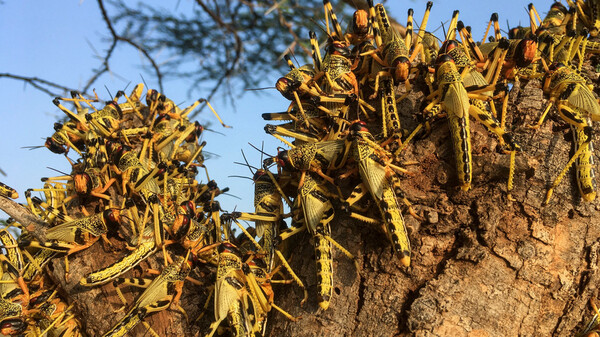
The 1875 locust plague in the western United States: This disaster affected large areas of the western United States and caused great damage to local agriculture, resulting in large-scale crop damage and economic losses.
2020 East African locust plague: This is a severe locust plague in East Africa, which has had a serious impact on agriculture in Kenya, Ethiopia, Somalia and other countries, causing huge economic losses.
African locust plague from 1986 to 1989: This locust plague lasted for several years and affected many countries on the African continent, causing a heavy blow to local food production and agriculture.
2016 Locust plague in southern Russia: This disaster broke out in southern Russia, which had a catastrophic impact on local agriculture and caused serious economic losses.
The 2002 locust plague in Afghanistan: This disaster affected Afghanistan's agricultural industry. The large-scale invasion of locusts caused serious damage to the local economy and food supply.
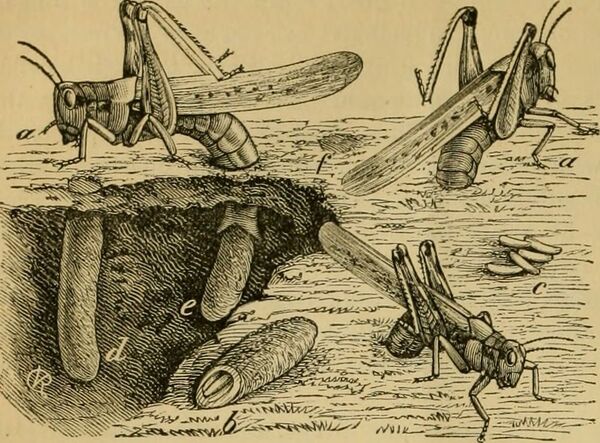
These famous locust plague incidents highlighted the serious threat posed by locust plague to global agriculture and food security. Its economic losses and humanitarian crisis shocked the world. Strengthening monitoring, early warning and effective prevention and control measures for locust plagues is crucial to meeting this global challenge.
1. Locust plague in the western United States in 1875
(The largest locust swarm in human history)
In 1875, the western United States encountered an unprecedented locust plague, which was one of the largest locust swarms recorded in human history. It is said that trillions of Rocky Mountain locusts swept in (some say 12.5 trillion), forming a swarm covering the sky. Its size reached about 177 kilometers wide and 2,900 kilometers long. Wherever it went, no green plants were spared.

An 1875 cartoon depicting a Kansas farmer battling a giant grasshopper.
However, miraculously, 28 years later, this Rocky Mountain locust mysteriously disappeared. There is still controversy over the reasons for the disappearance of this locust. Some scientists who study genetic issues claim that when facing the crisis of extinction, this locust is subject to genetic defects and lack of variation, and is unable to effectively respond to environmental changes, thus promoting its extinction process.
2. Locust plague in East Africa in 2020
(Hundreds of billions of locust plagues sweep across Africa and Asia)
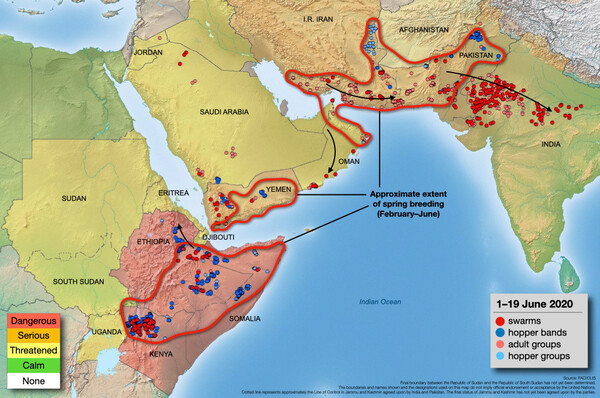
Since the beginning of 2020, many countries in East Africa have encountered a severe locust plague once in decades. This disaster has spread to Asia, bringing a serious food security crisis to tens of millions of people. In East Africa, Kenya has experienced the most serious desert locust invasion in the past 70 years, while Somalia and Ethiopia have also experienced the most serious locust invasion in the past 25 years.
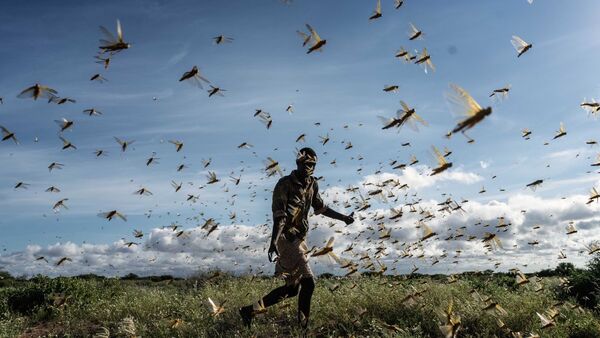
Not only that, in Asia, Pakistan has been hit by the most serious locust plague in 27 years, causing the country to enter a state of emergency; while the Indian state of Rajasthan has been attacked by up to 400 billion locusts. This disaster destroyed a large number of crops. . This series of events has become one of the famous locust plagues in the history of the 21st century, arousing widespread concern and concern around the world.
3. Locust plague in Africa from 1986 to 1989
(More than 30 countries were affected by the disaster)
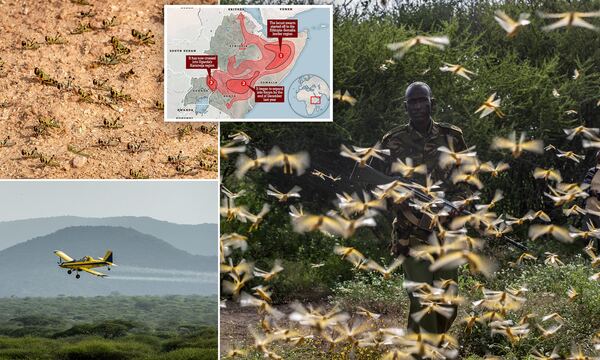
A locust disaster occurred globally. This locust plague occurred from 1986 to 1989. Locust swarms composed of African desert locusts and soil locusts attacked parts of Africa and Asia, causing more than 30 countries to be affected by the disaster, including Mauritania, Morocco, Saudi Arabia, In Mali, Chad, Niger and other countries, the affected area exceeded 16.8 million hectares.
4. Locust plague in Africa from 2003 to 2005
(Sweeping across 20 countries in North Africa)
Between 2003 and 2005, Africa suffered an unprecedented locust disaster. Known as the worst locust plague in 15 years, this disaster has swept across 20 countries in North Africa, with millions of hectares of affected areas, and prevention and control efforts costing 13 million liters of pesticides and more than 500 million US dollars. According to statistics, the loss caused by the locust plague is as high as 2.5 billion US dollars.
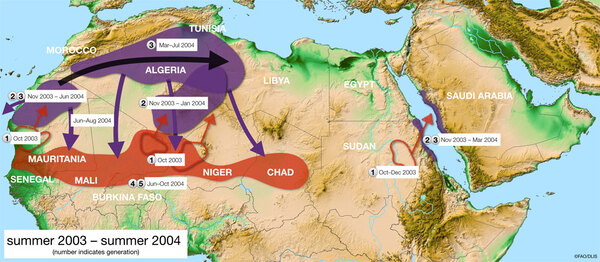
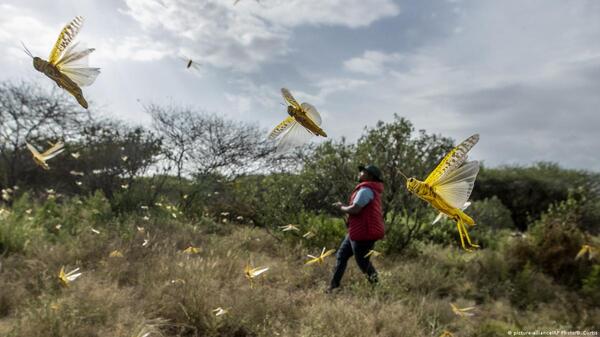
During the raging locust plague, African countries devoted huge efforts and resources to prevention and control. At the same time, unfavorable weather conditions also provided conditions for the spread of locusts. Eventually, through control efforts and fortunate adverse weather conditions, the locust plague was brought under control. However, the disaster left serious consequences, causing millions of people to lose their food and livelihoods. In addition, there is also the problem of environmental damage, because the use of large amounts of pesticides has caused potential harm to the local ecological environment.
5. Locust plague in southern Russia in 2016
(The worst local locust plague in 30 years)
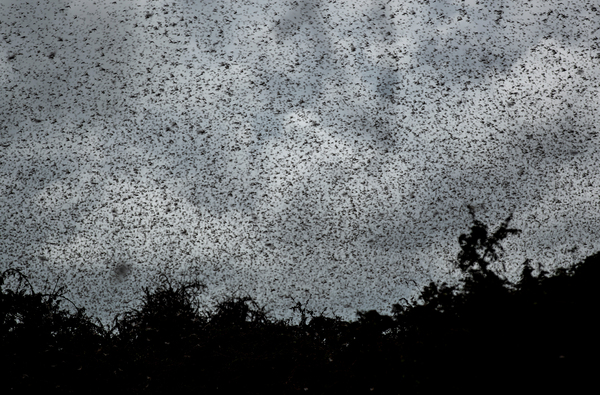
In 2016, a severe locust disaster occurred in southern Russia. According to a report by the British Daily Mail on May 30, 2016, this locust plague has been described as the most serious event in southern Russia in 30 years. It has had a devastating impact on local crops and the local government has declared a state of emergency. . According to reports, the affected area reached 70,000 hectares, and at least 10% of farmland was destroyed. A video circulated on the Internet showed dense swarms of locusts flying over, blocking the sky and forcing drivers to swerve to avoid the situation. The scene was shocking, like the end of the world.
6. Locust plague in Eilat, Israel, 2004
(The worst locust plague in Israel since 1959)
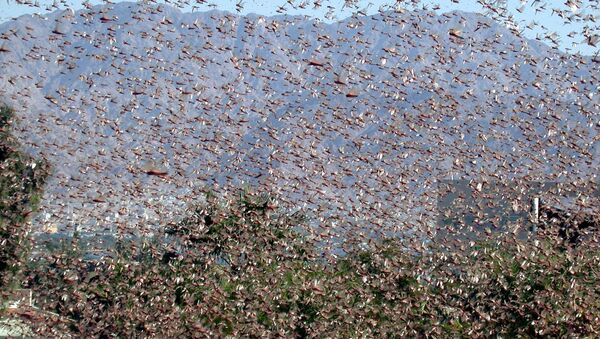
On November 21, 2004, millions of locusts attacked the southern Israeli city of Eilat, causing huge damage to the city and destroying a large number of crops and flowers. Israel has had to use aircraft to spray pesticides to curb the spread of locusts. According to Reuters, this is the first time since 1959 that Israel has faced such a serious locust plague.
Local residents described how the swarms of locusts that covered the sky not only gnawed away at palm leaves, but also devoured the flowers in the entire garden. They feed their needs and eat everything, even the green lawns on the roadside are covered and destroyed by them.
7. Locust plague in Afghanistan in 2002
(It was the worst locust plague in the past 30 years)
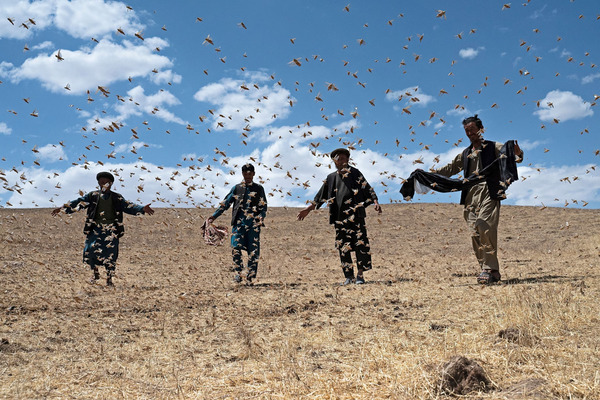
On April 23, 2002, the Food and Agriculture Organization of the United Nations reported that one of the world's top ten locust disasters occurred in Afghanistan. Due to long-term poverty, war and drought, Afghanistan has faced the most serious locust disaster in the past 30 years. Sweeping locusts are devouring some areas of Afghanistan, causing huge disasters to the local people.
Large areas of saplings and crops that had just sprouted and turned green were eaten away by locusts. Villagers could only rely on simple tools such as bags and blankets to catch these locusts and then crush them to death with their feet. However, this simple method did not bring much effect. The number of locusts was so large that they could not be effectively controlled by traditional methods.
8. Locust plague in Somalia in 1958
(400 million locusts eat 400,000 people in one day)
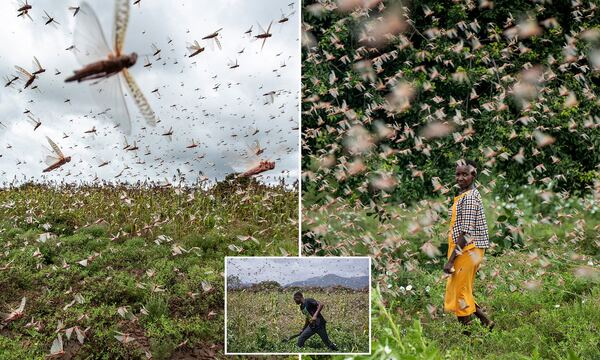
In 1958, Somalia was ravaged by 400 million desert locusts, spreading to an area of 1,000 square kilometers. Desert locusts are one of the most destructive pests in the world. They feed on crops and cause huge losses to humans. In Somalia that year, these locusts destroyed about 80,000 tons of food in one day, which was equivalent to the annual rations of 400,000 people. This event is listed as one of the most serious locust plagues in the world.
9. Locust plague in Xinjiang in 2000
(100,000 ducks eat locusts)

In May 2000, a locust plague broke out in northern Xinjiang. In order to deal with the disaster, in addition to chemical treatment, a large number of locust-killing chickens and ducks were also introduced as a method of biological locust control. Chickens and ducks play an important role in biological control of locusts because of their large numbers. Although the number of locally raised chickens is large, it is still not enough to completely eliminate locusts, and the loss rate is high. Therefore, an additional 100,000 ducks were invested to help with the responseLocusts are raging.
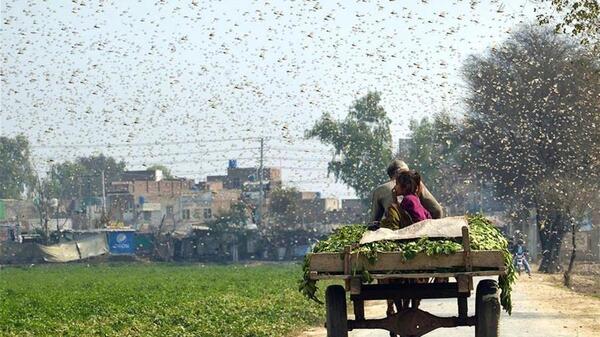
By the end of August of the same year, at least nearly 1 million acres of locust swarms in Xinjiang were successfully cleared by these chickens and ducks, which had a remarkable effect. It is understood that at that time, a duck could swallow more than 100 locusts in a short period of time, demonstrating the high efficiency of chickens and ducks in controlling the number of locusts.
10. Locust plague in Australia in 2010
(The worst local locust plague in decades)
In 2010, Australia experienced an unprecedentedly severe locust plague in its history. The locust plague spread rapidly and spread almost all over the country. In some areas, locust eggs have been deposited for up to 20 kilometers, covering an area as large as Spain. This is an astonishing sight. An important cause of this locust plague is the abnormal climate in eastern Australia. The hot and humid environment just promotes the breeding of locusts.
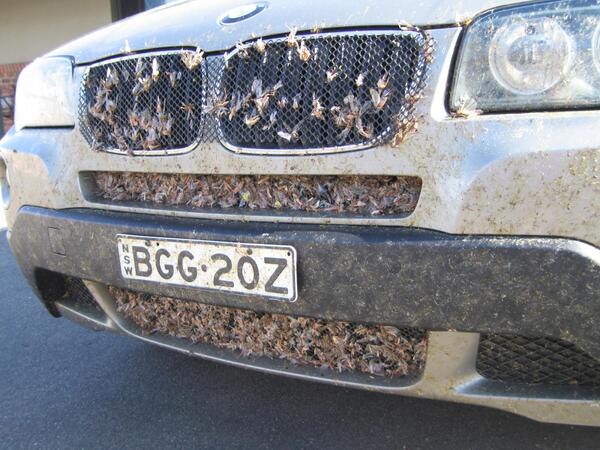
According to reports, the raging locusts have devoured about a quarter of Victoria's crops, causing agricultural economic losses of up to 2 billion Australian dollars. It is one of the largest locust plagues in the world and has dealt a serious blow to the local agricultural economy.
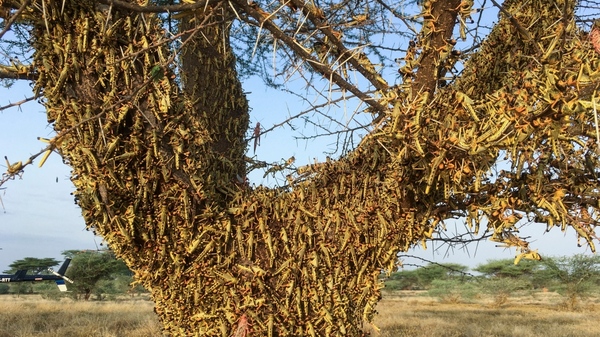
The 2003 locust plague in the western United States was the worst since World War II in Idaho.
The locust plague in Kazakhstan in 2000 affected 81.1 million hectares of land.
In the 1979 locust plague in the United States, farmland and pastures in 14 states west of the Missouri River were covered. Locusts even covered the roads in Yakima, Washington, and traffic was interrupted for several days.
In May 2017, the Greek island of Agios Efstratios was occupied by locusts and the entire island entered a state of emergency.
From 1996 to 1998, locust plagues broke out on both sides of the Red Sea, affecting Saudi Arabia.
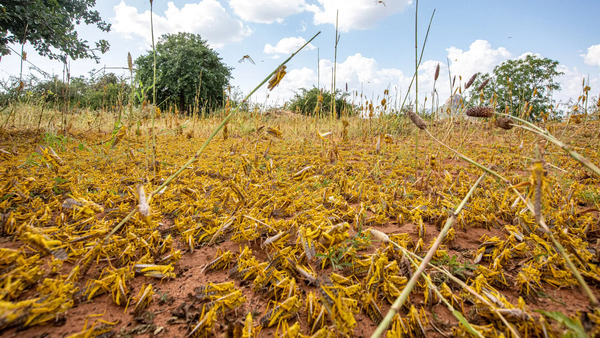
The ranking of the top ten locust disasters in the world is based on media reports comprehensive disaster range (country/region), number of locusts, duration, disaster situation (food crops/plants/animal husbandry/living environment), economic losses, emergency measures, social impact and other factors derived from a comprehensive assessment. Such a list provides a reference to show the impact of different locust plague events on various parts of the world. The data is as of March 22, 2024. If you have any questions, comments/corrections are welcome.
animal tags:
We created this article in conjunction with AI technology, then made sure it was fact-checked and edited by a Animals Top editor.